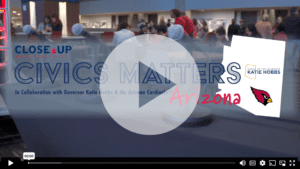 Amidst the mosaic of national debates surrounding climate change, economic justice, and public health, there is a growing focus on the intersection of these issues and the design of our communities. The overwhelming majority of U.S. households own at least one vehicle, and the number of vehicles registered in the United States has continued to rise in recent years.1 Some argue that car dependency is a symptom of the design of American cities, others argue that it’s the cause.
Amidst the mosaic of national debates surrounding climate change, economic justice, and public health, there is a growing focus on the intersection of these issues and the design of our communities. The overwhelming majority of U.S. households own at least one vehicle, and the number of vehicles registered in the United States has continued to rise in recent years.1 Some argue that car dependency is a symptom of the design of American cities, others argue that it’s the cause.
Climate scientists have made the case that continued suburban sprawl and car dependency are detrimental to fighting climate change, and that urban life leads to a smaller carbon footprint.2 With Americans moving to the suburbs and out of urban and rural areas in greater numbers, many urban theorists and planners have been working to find ways to make cities more desirable places to live. Some communities around the country have already implemented radical programs with some measures of success.3
Highway History and Reckoning
The design of many U.S. cities is due to political battles in the early 20th century, when cities expanded rapidly. Typically, these cities expanded outwards rather than upwards. Many urban planners chose to build large highways to facilitate the movement of cars into and out of city centers each day.
In 2022, Secretary of Transportation Pete Buttigieg announced a $1 billion program, Reconnecting Cities, to help rectify the harm caused by 20th-century highway projects, particularly to lower-income areas and communities of color.4 This initiative, part of a larger investment in infrastructure by President Joe Biden’s administration, offers federal aid to cities and states that wish to add public transit, bike lanes, and/or highway crossings, or even partially remove highways.
The association of highways with racial justice drew some attention in the press, echoing a history of citizen action against highway construction in the 1950s.When the U.S. Bureau of Public Roads originally published the blueprint of the Interstate Highway System (all 41,000 miles of it), some Americans in larger cities pushed back on the urban redesign out of fear that the highways would disrupt or destroy certain communities. Citizens protested, blocked construction, and filed lawsuits. These efforts became known as the “highway revolts,” and they took place in cities around the United States, most notably in Washington, San Francisco, and New York City.5

In recent years, some have pushed for the outright removal or urban redesign of the freeways that cut through the center of cities. One city that paved the way for urban freeway removal was Rochester, New York.6 The I-490 Inner Loop, a freeway that closely encircled downtown Rochester, was built in the 1950s and functionally divided the center of the city with a massive trench to bring commuters in and out of downtown. Starting in 2014, the city closed the eastern portion of the loop and began to fill it in with dirt, then paved a wide avenue with bike lanes, storefronts, and new housing in the form of apartments. The goal was to make downtown Rochester a more livable place. The popularity among residents was mixed, but the city considers the project a success and says it plans to remove further sections of the loop. Rochester transportation specialist Erik Frisch called the project “a bit of a proof of concept.”6
READ MORE: “Can Removing Highways Fix America’s Cities?” from the New York Times
Fifteen Minutes or Less?
Another concept that’s been gaining traction is the “15-minute city” design. Rather than requiring a personal vehicle to commute to work or school, go to the gym, visit friends, or buy groceries, residents of a 15-minute city design could reach all of these essential amenities within approximately 15 minutes by foot, bicycle, or public transportation. Internationally, Paris has led the charge on redesigning cities to dramatically reduce the need for personal vehicles. Mayor Anne Hidalgo championed the concept as a means to reduce emissions and fight climate change, and it was a major part of her reelection campaign. Streets were closed to vehicular traffic, old buildings were converted to housing or retail and office space, and new parks were built.8
TThe 15-minute city design concept was conceived by Carlos Moreno, a professor at Sorbonne University of Paris. Moreno advised Hidalgo for the Parisian effort, and now his ideas have spread to North America. Cities such as Cleveland, Portland, and San Jose have all expressed plans to redesign with this concept in mind.7 Fifteen-minute city proponents argue that denser neighborhoods can help urban planners make better use of land and allow people to live closer to work, school, and other amenities, so many are starting the effort by removing zoning ordinances that only allow for the building of single-family housing.
READ MORE: “’15-Minute City’ Planning is on the Rise, Experts Say. Here’s What to Know,” from the Washington Post
Highway removal and 15-minute city redesign have drawn detractors as well, both in the public sphere and in government. Critics argue that implementing the 15-minute city concept in the United States is considerably more difficult than it is in other countries, as our cities were largely designed during the automobile era. The transition would be very complex and resource-intensive, challenging social and economic habits and needs in American culture such as dependency on cars and perceptions of urban and public spaces. Highway removal projects also face opposition in some areas where they’ve been proposed. Rochester’s highway removal took two decades to get started, and it faced less opposition than it would have in other places (the portion of the highway removed carried very little traffic).
Still, urban redesign projects are often popular among Americans, especially younger generations, and may drastically change our cities in the coming decades.
Discussion Questions
- Should urban planners encourage these projects as a way to reduce car dependency and climate change?
- Would you prefer to live in a “15-minute city”? Why or why not?
- Does the urban design of the United States and its history being intertwined with racial injustice and segregation need a cultural reckoning?
- Can you think of any large- or small-scale projects that you’d like to see urban planners implement in your community?
How to Get Involved
Local city planning meetings are often open to the public and allow citizens to voice their opinions on new proposals. Check to see if there are any meetings in your community!
Related posts
As always, we encourage you to join the discussion with your comments or questions below.
Close Up is proud to be the nation’s leading nonprofit civic education organization, working with schools and districts across the country since 1971. If you would like to partner with us or learn more about our experiential learning programs, professional development, or curriculum design and consulting, contact us today!
Sources
 The rapid thumps of hearts beating with thrill, the rejuvenating scent of exhilaration in the air, the movement of gliding past people swiftly. This is not a group of kids whizzing through a ski run—this is a group of 26 PHS students receiving an exclusive, behind-the-scenes tour of the Capitol Building in Washington, D.C.
The rapid thumps of hearts beating with thrill, the rejuvenating scent of exhilaration in the air, the movement of gliding past people swiftly. This is not a group of kids whizzing through a ski run—this is a group of 26 PHS students receiving an exclusive, behind-the-scenes tour of the Capitol Building in Washington, D.C. In the years following students’ return to in-person classes after the COVID-19 outbreak, questions about parents’ role in education and curriculum development—and the appropriateness of discussing controversial topics such as sex and gender orientation in the classroom—have come to the forefront of political debate.
In the years following students’ return to in-person classes after the COVID-19 outbreak, questions about parents’ role in education and curriculum development—and the appropriateness of discussing controversial topics such as sex and gender orientation in the classroom—have come to the forefront of political debate. On January 31, Harvard and Stanford Universities released the Education Recovery Scorecard, an assessment of student achievement following the COVID-19 pandemic learning loss.1 The report detailed the gains third- through eighth-grade students in 8,000 school districts across the country have made in their math and reading scores.2 The Education Recovery Scorecard results show that there has been significant recovery in these two subjects, though more needs to be done to help students reach basic levels of proficiency.
On January 31, Harvard and Stanford Universities released the Education Recovery Scorecard, an assessment of student achievement following the COVID-19 pandemic learning loss.1 The report detailed the gains third- through eighth-grade students in 8,000 school districts across the country have made in their math and reading scores.2 The Education Recovery Scorecard results show that there has been significant recovery in these two subjects, though more needs to be done to help students reach basic levels of proficiency.
 On Sunday, February 4, a bipartisan group of senators unveiled a compromise bill intended to address border security concerns and to provide further funding for Ukraine’s military defense against Russia.1 In this post, we will examine the immigration-related contents of the compromise legislation and explore different perspectives about the border security bill.
On Sunday, February 4, a bipartisan group of senators unveiled a compromise bill intended to address border security concerns and to provide further funding for Ukraine’s military defense against Russia.1 In this post, we will examine the immigration-related contents of the compromise legislation and explore different perspectives about the border security bill. Student Symposium: Forging Future Leaders
Student Symposium: Forging Future Leaders NNSP Annual Conference: Equipping Educators for Impactful Learning
NNSP Annual Conference: Equipping Educators for Impactful Learning Close Up and NNSP Impact: Fostering Civic Engagement
Close Up and NNSP Impact: Fostering Civic Engagement Amidst the mosaic of national debates surrounding climate change, economic justice, and public health, there is a growing focus on the intersection of these issues and the design of our communities. The overwhelming majority of U.S. households own at least one vehicle, and the number of vehicles registered in the United States has continued to rise in recent years.1 Some argue that car dependency is a symptom of the design of American cities, others argue that it’s the cause.
Amidst the mosaic of national debates surrounding climate change, economic justice, and public health, there is a growing focus on the intersection of these issues and the design of our communities. The overwhelming majority of U.S. households own at least one vehicle, and the number of vehicles registered in the United States has continued to rise in recent years.1 Some argue that car dependency is a symptom of the design of American cities, others argue that it’s the cause.


 In the weeks since the Hamas terrorist attacks of October 7, Israel has conducted a military campaign with the stated goal of eradicating Hamas as both a military and governing organization.1 The death toll in Gaza currently stands at around 22,000 Palestinians and 170 Israeli soldiers, in addition to the more than 1,200 people Hamas killed on October 7.2 While further negotiations over a second ceasefire are ongoing (as of January 3, 2024), officials in the United States and around the world are also concerned about broader regional and global conflict boiling over.3 Many in the United States share these concerns.4
In the weeks since the Hamas terrorist attacks of October 7, Israel has conducted a military campaign with the stated goal of eradicating Hamas as both a military and governing organization.1 The death toll in Gaza currently stands at around 22,000 Palestinians and 170 Israeli soldiers, in addition to the more than 1,200 people Hamas killed on October 7.2 While further negotiations over a second ceasefire are ongoing (as of January 3, 2024), officials in the United States and around the world are also concerned about broader regional and global conflict boiling over.3 Many in the United States share these concerns.4






